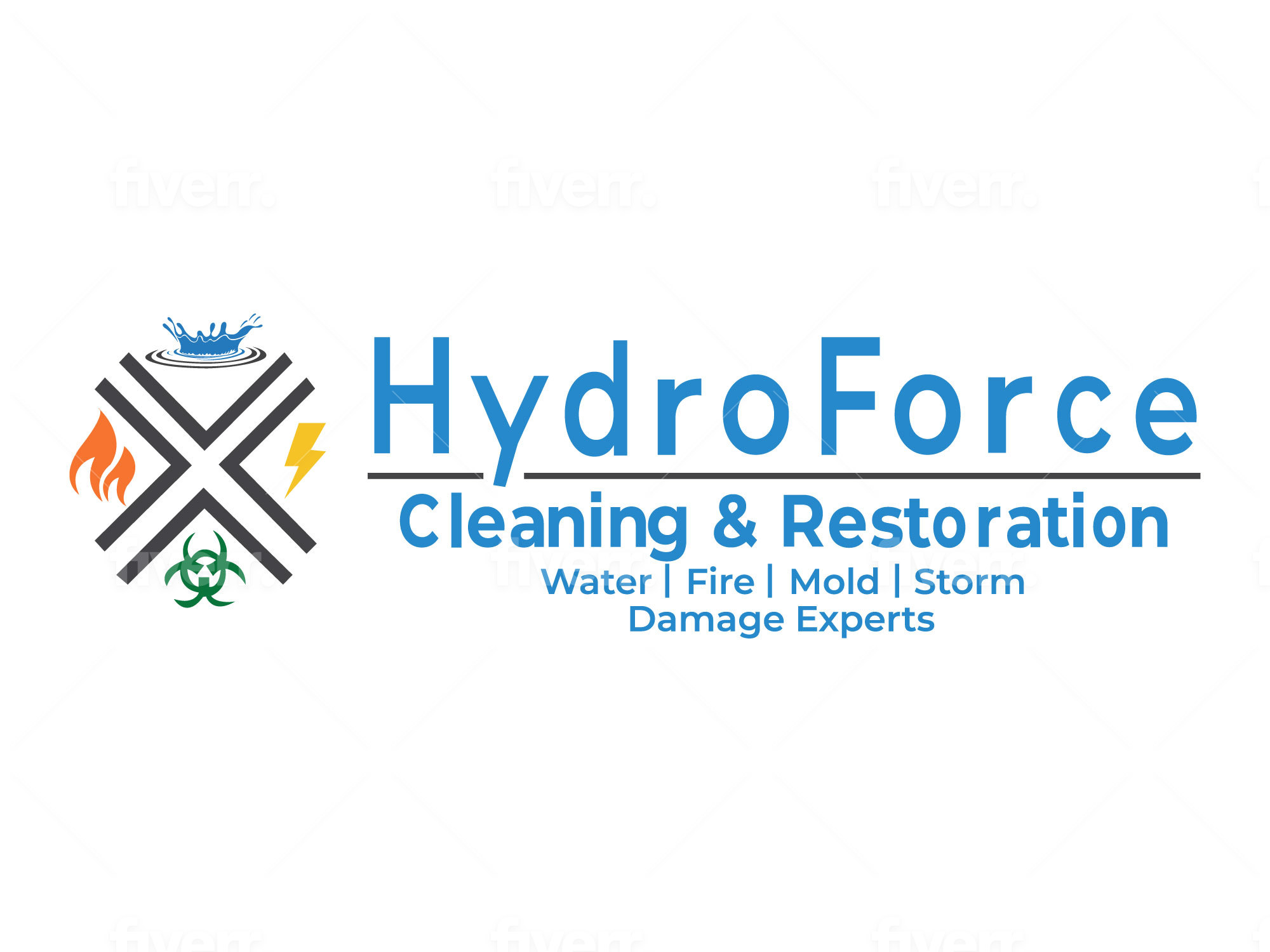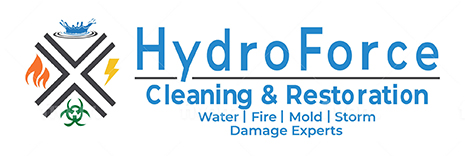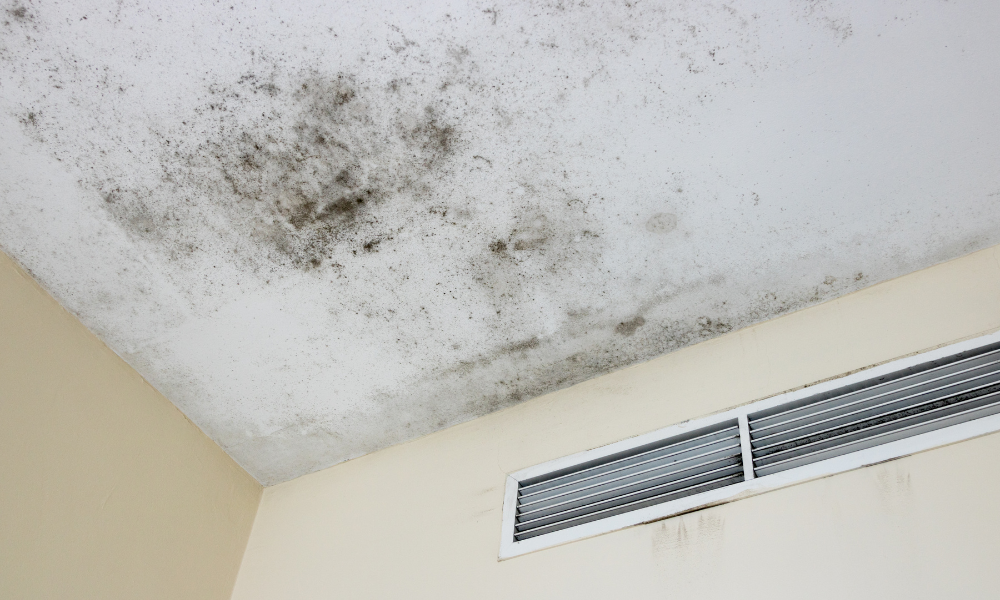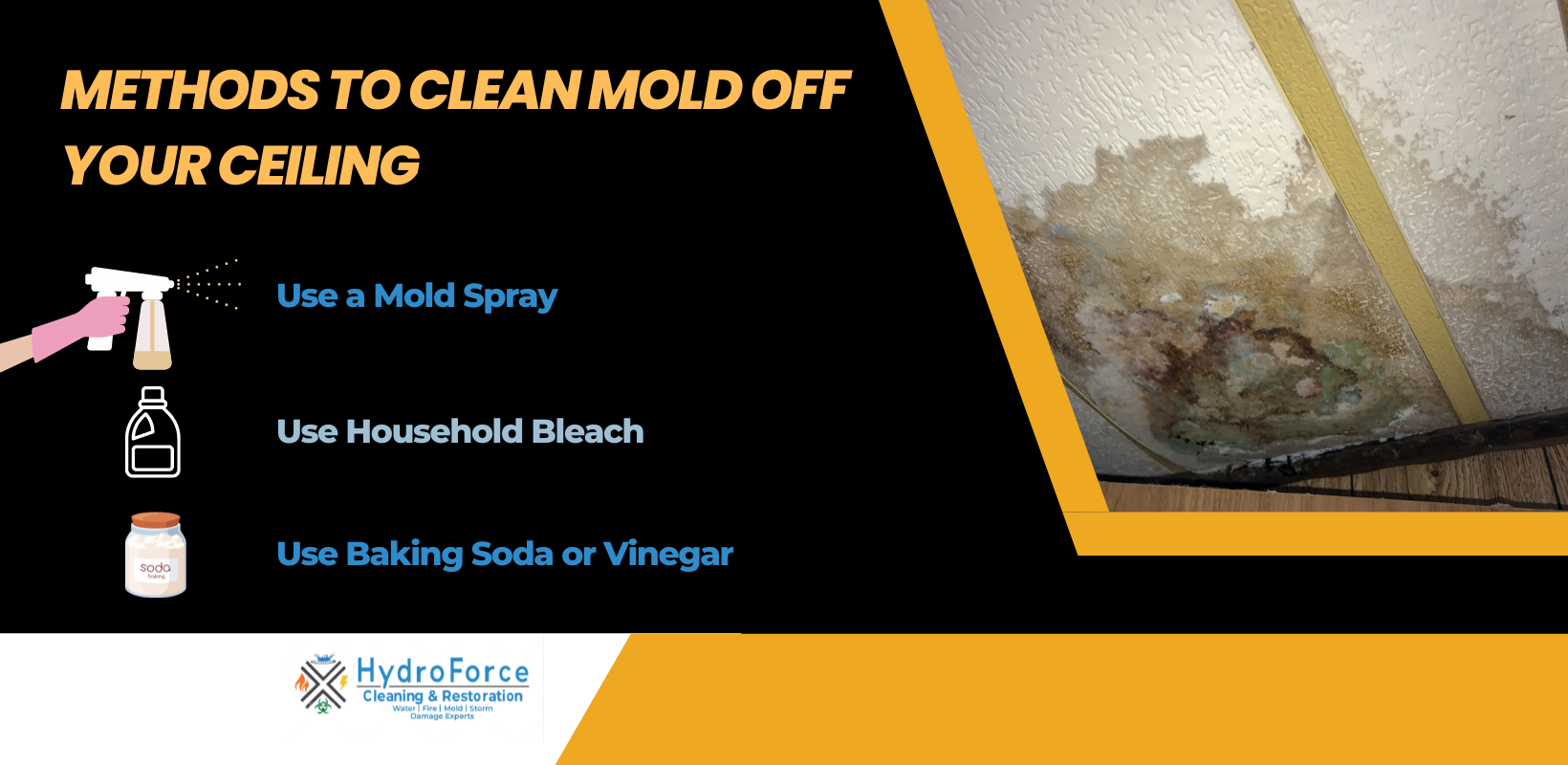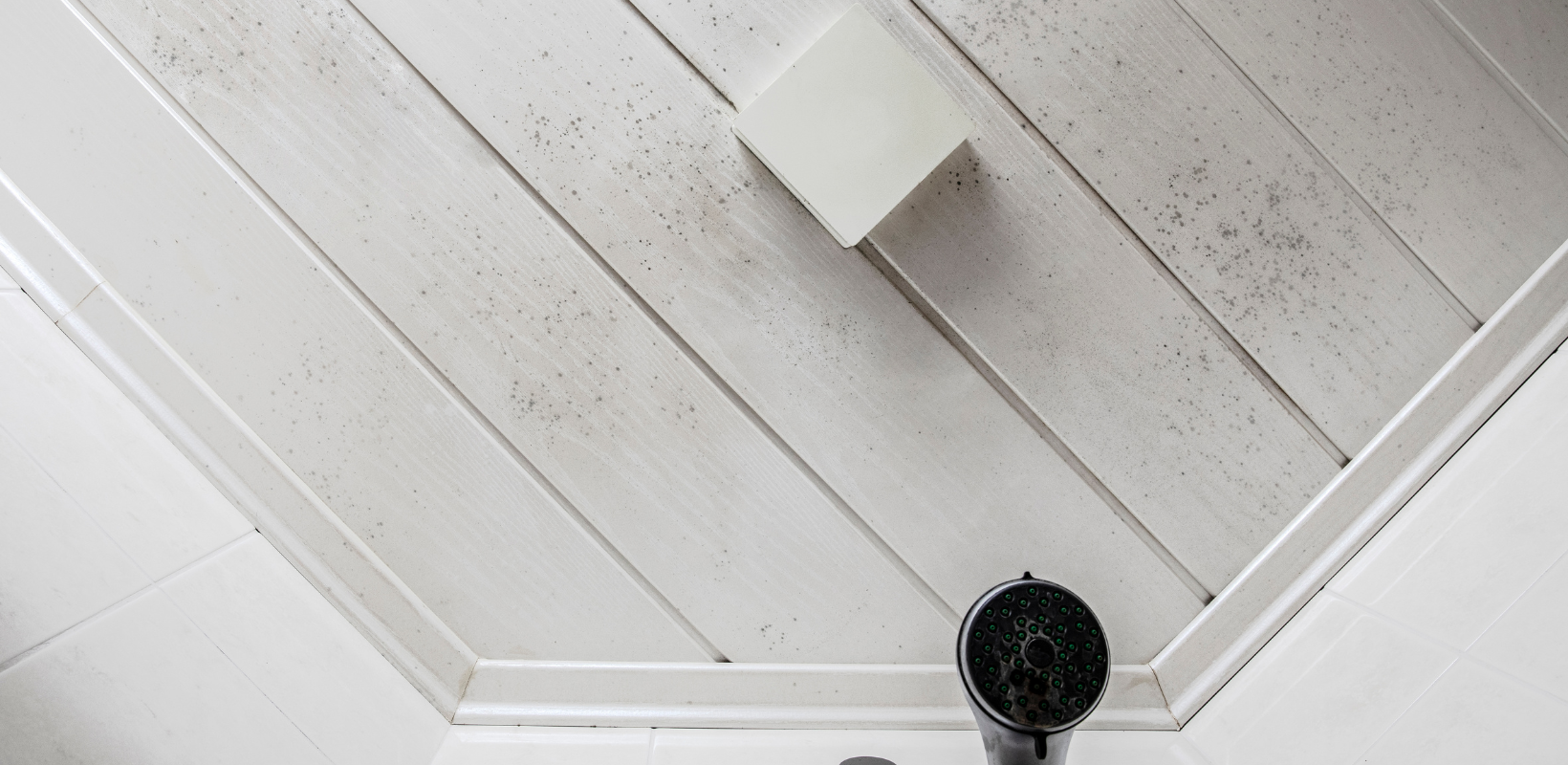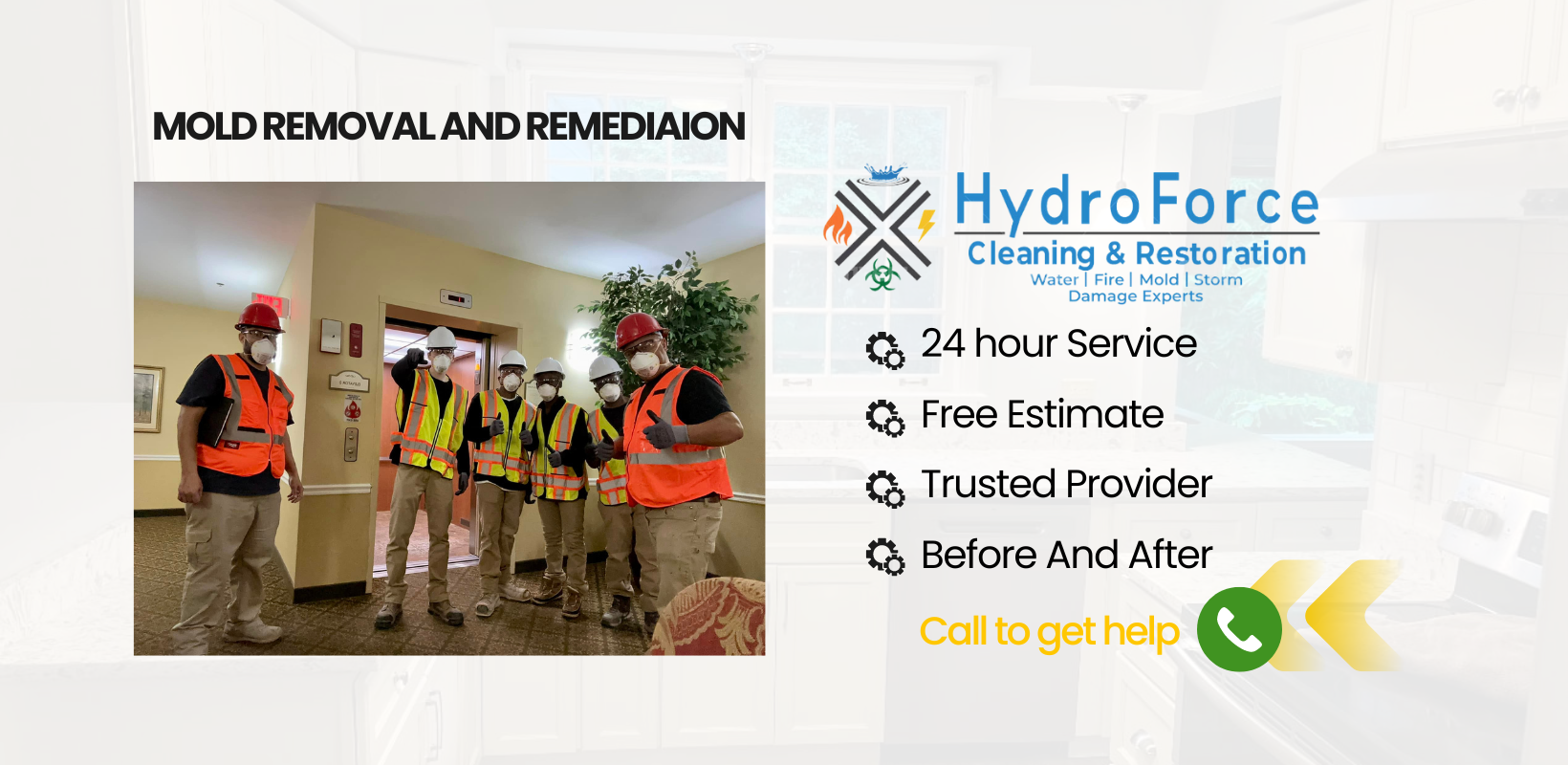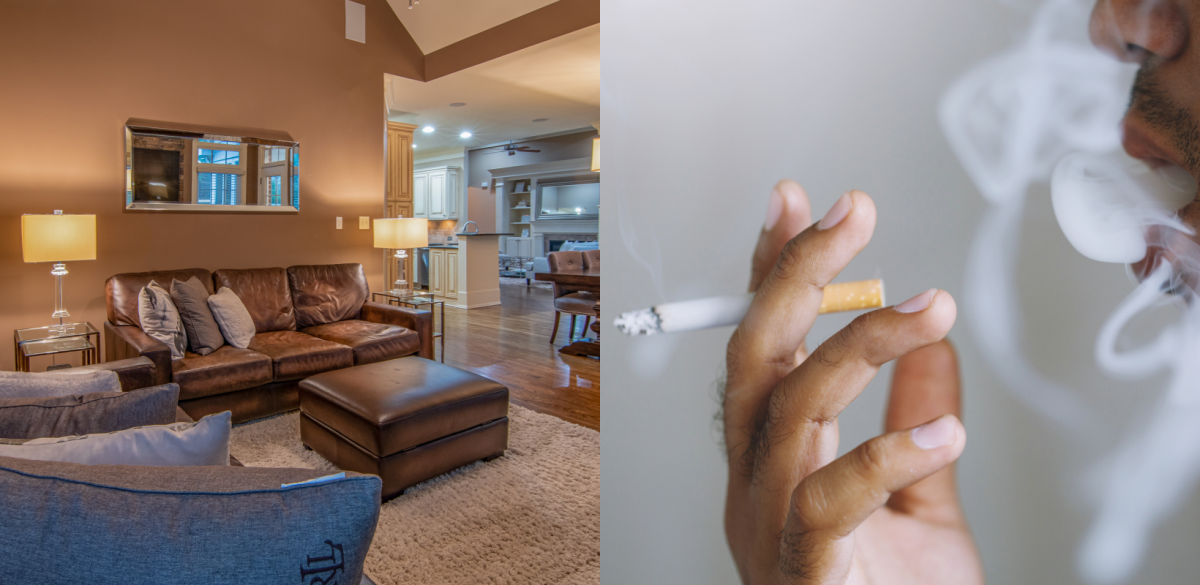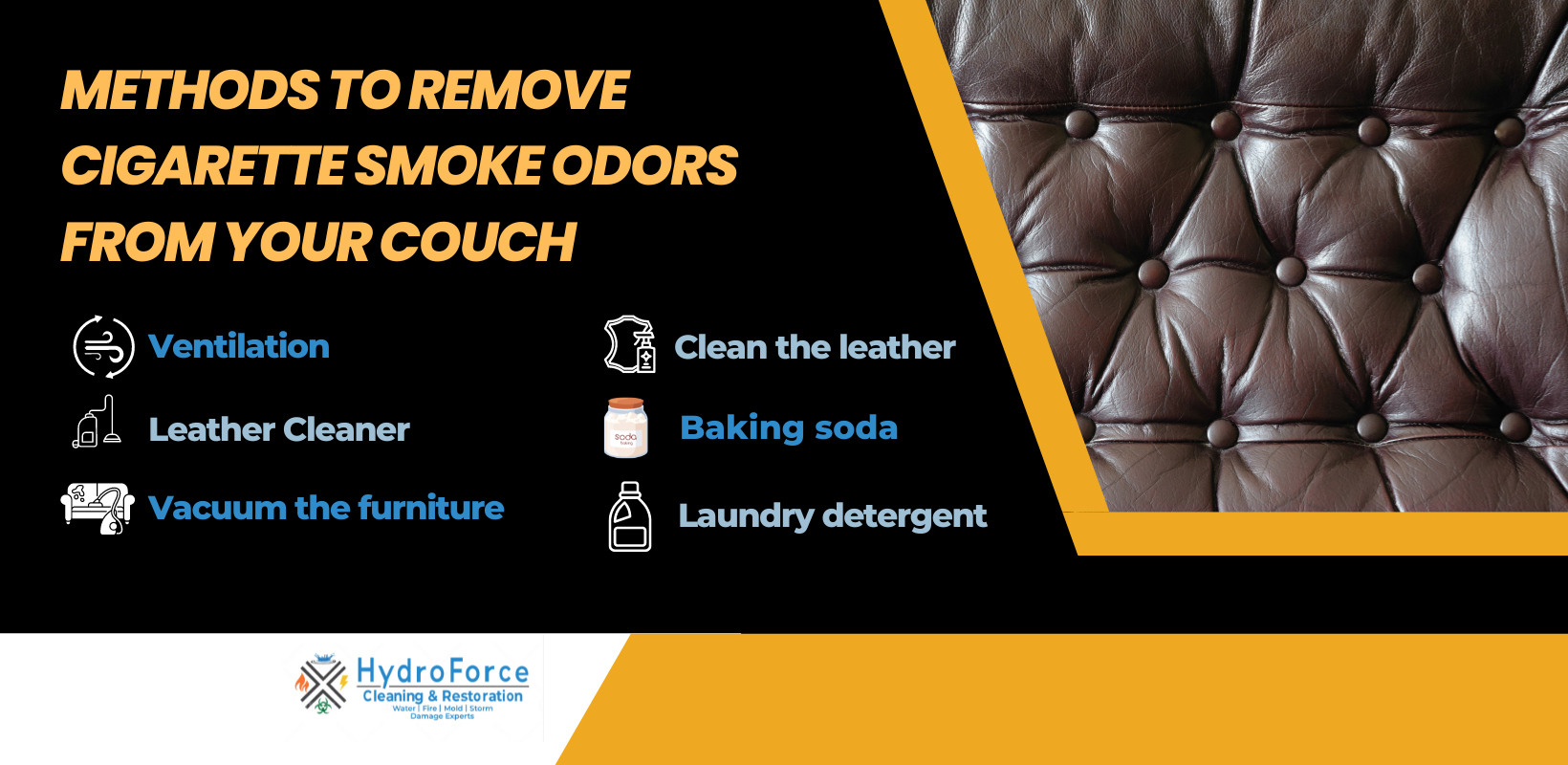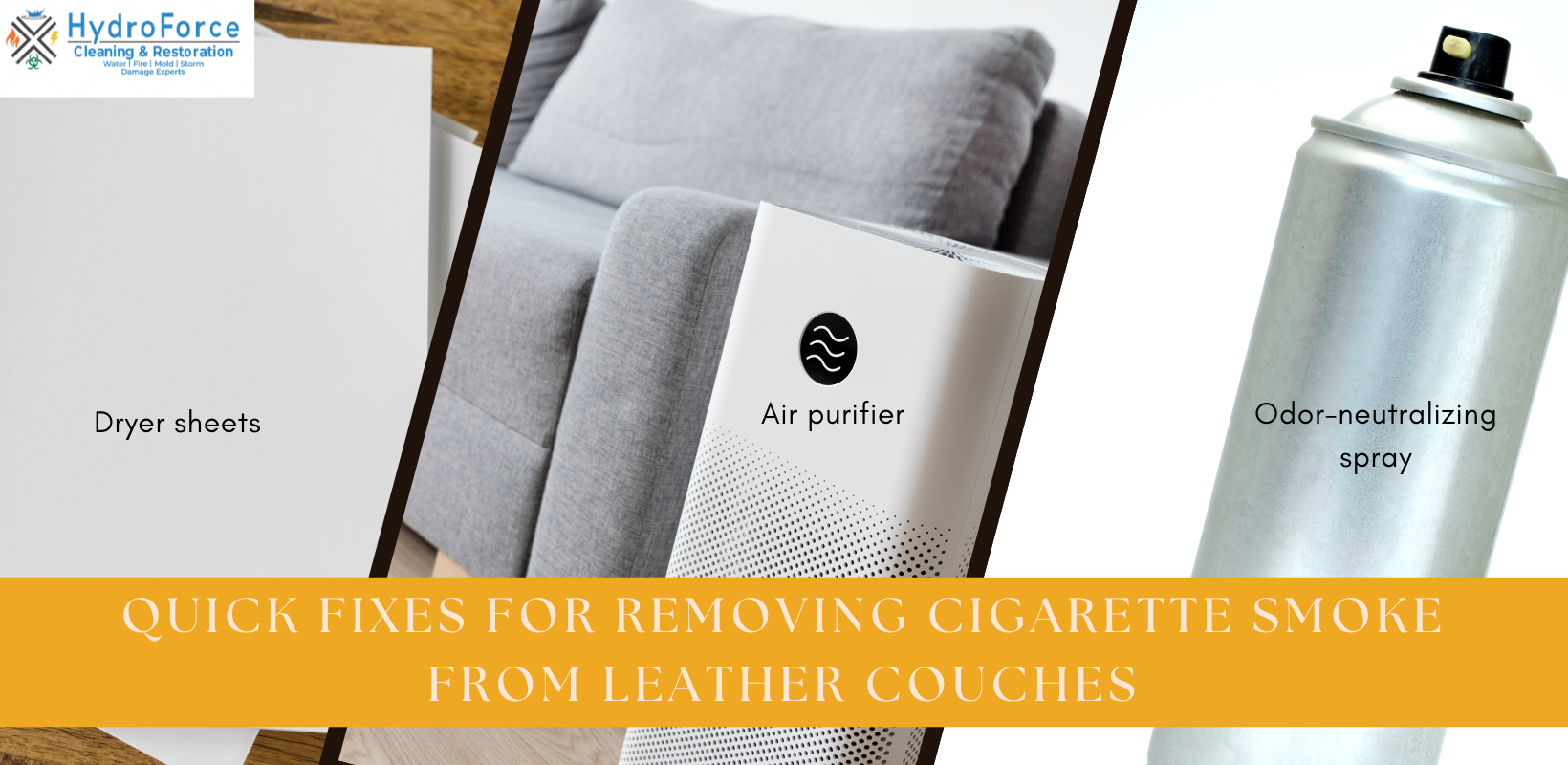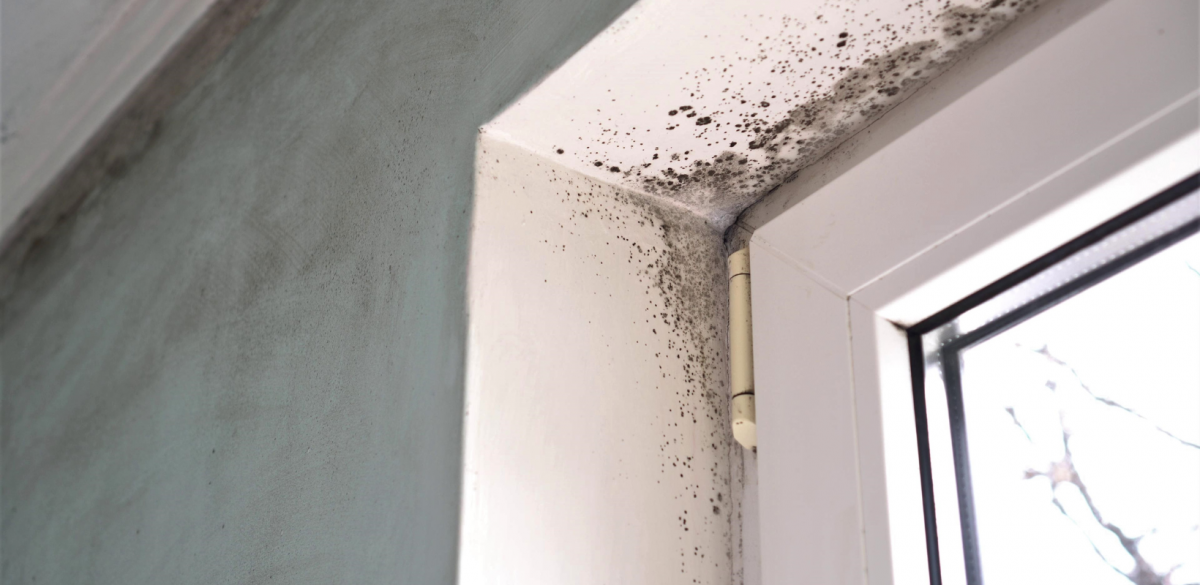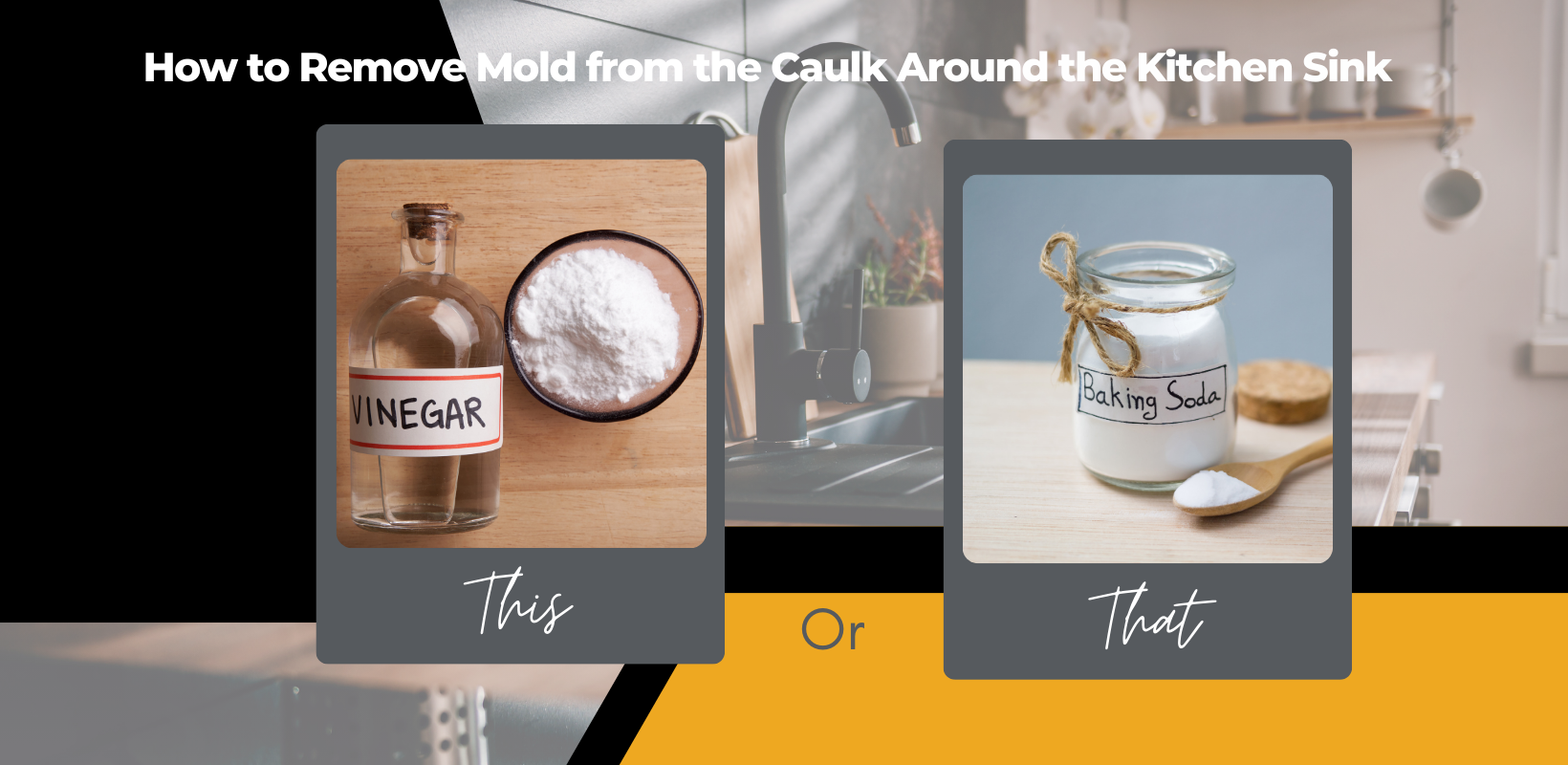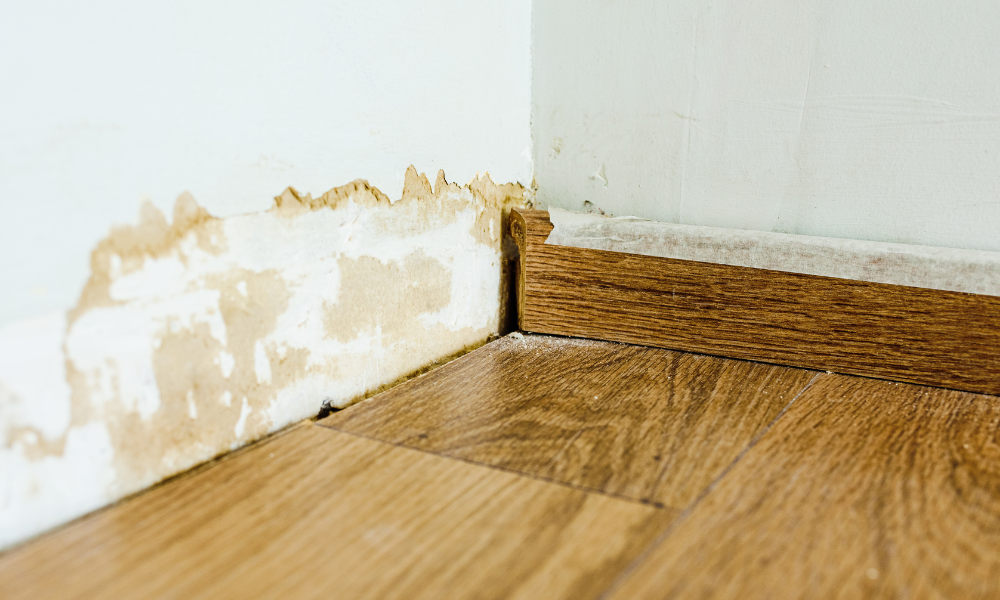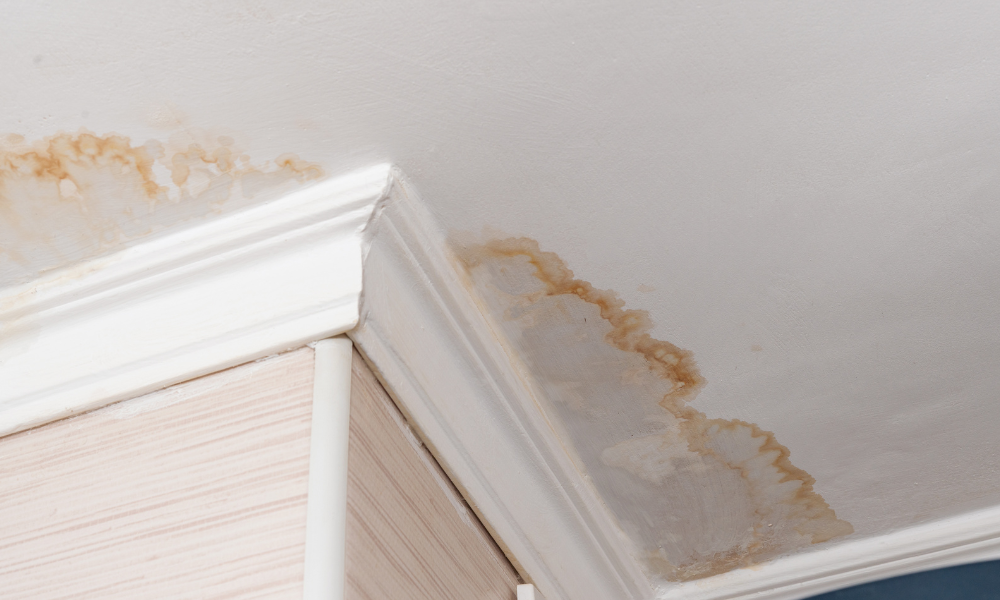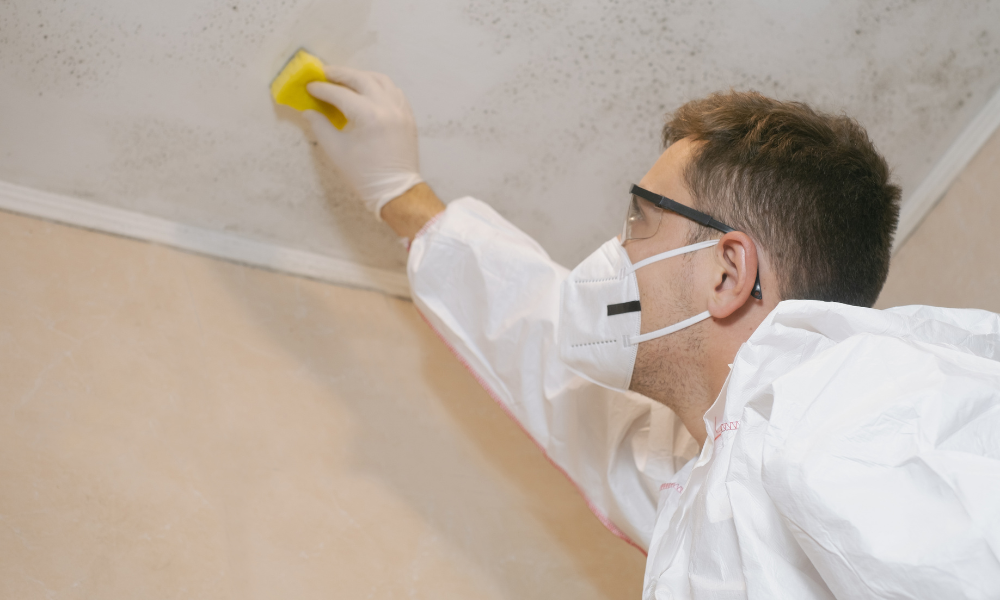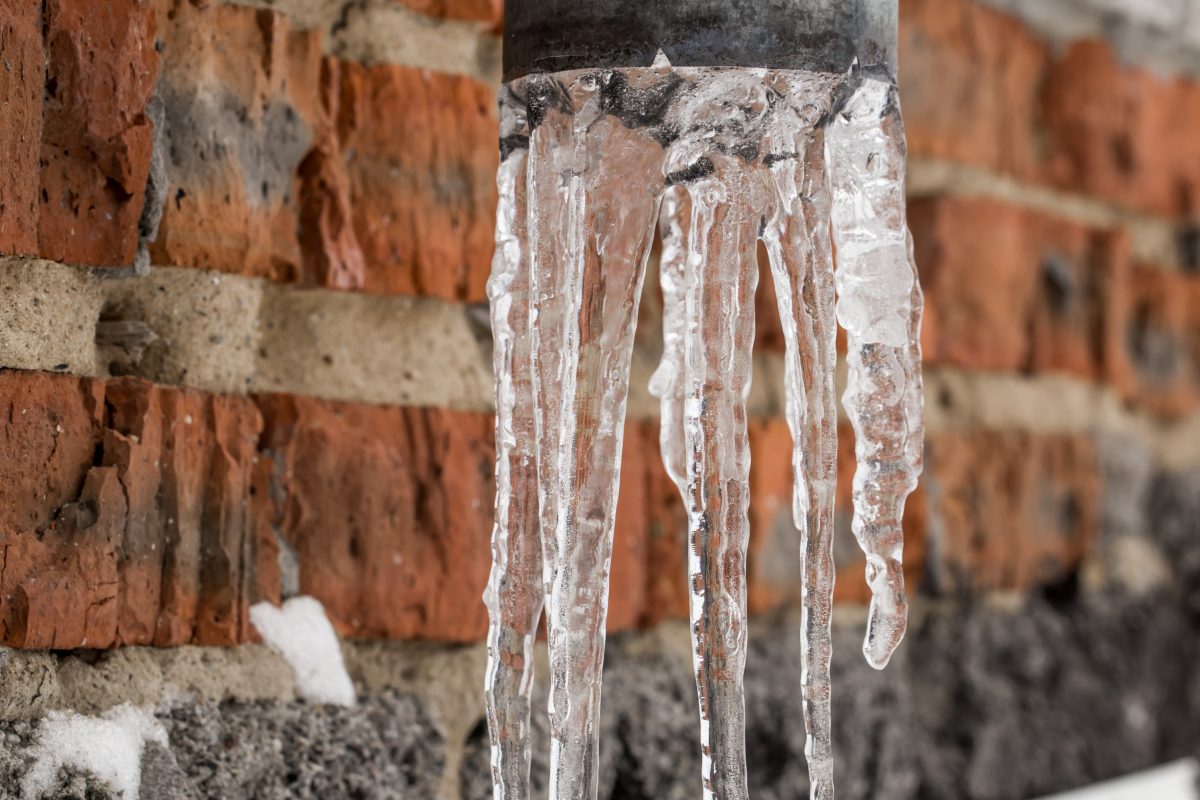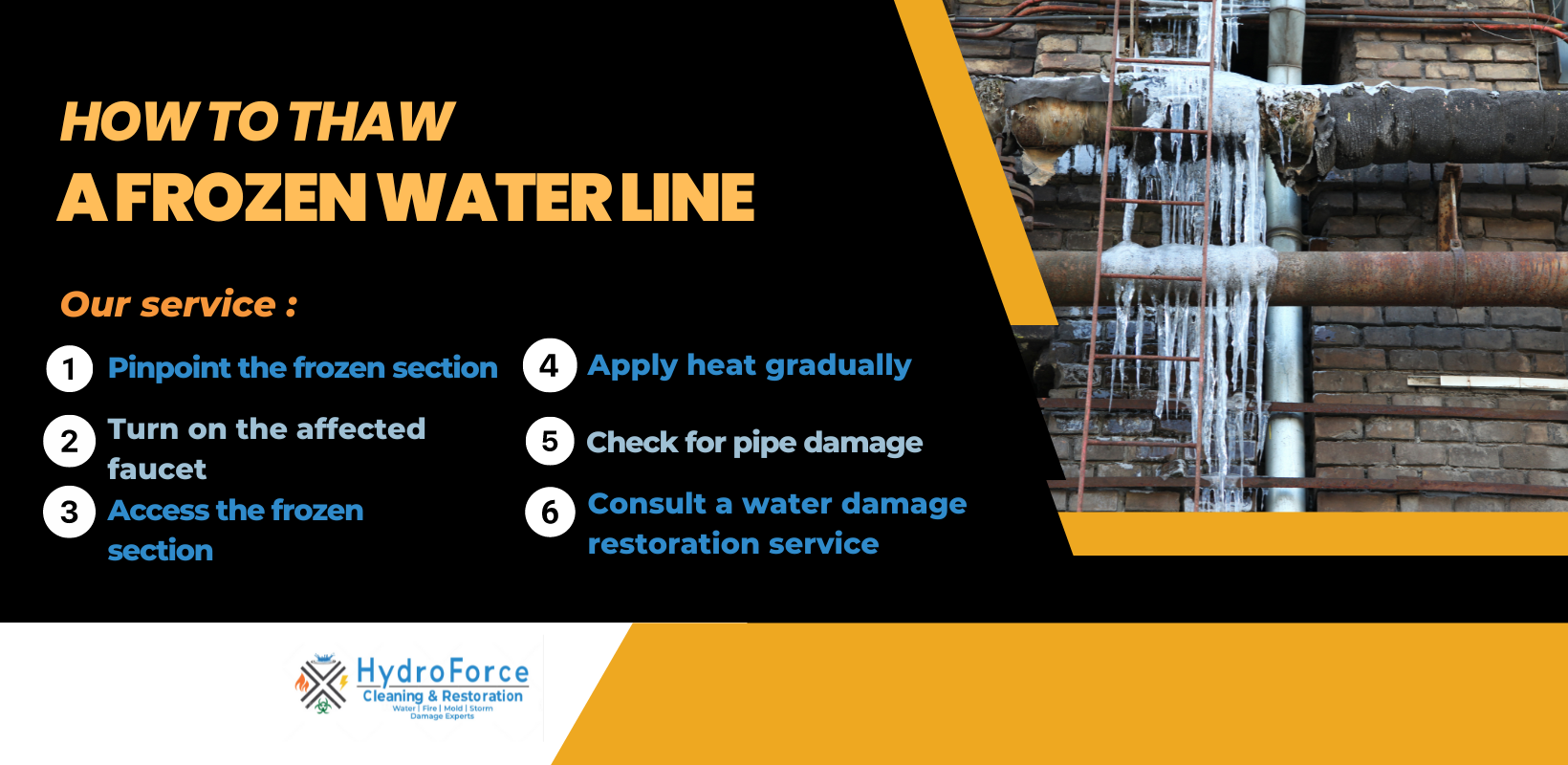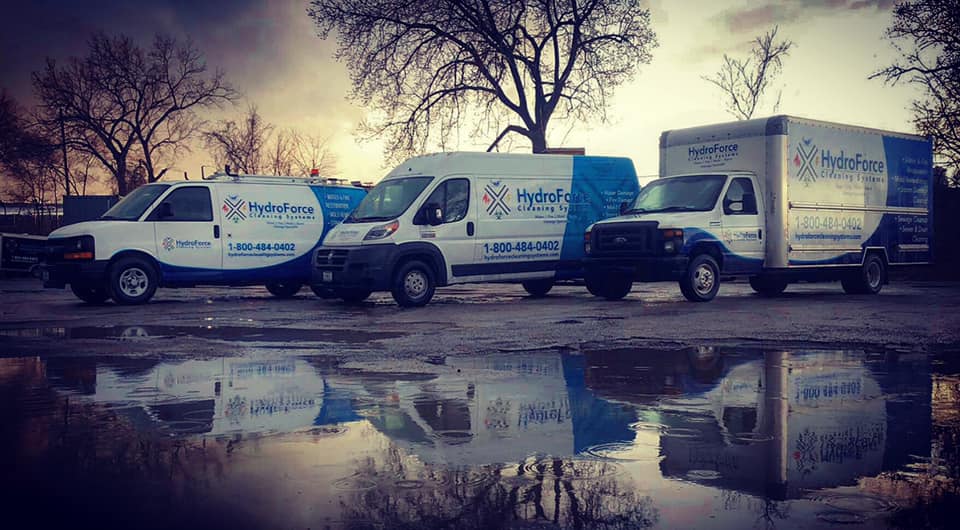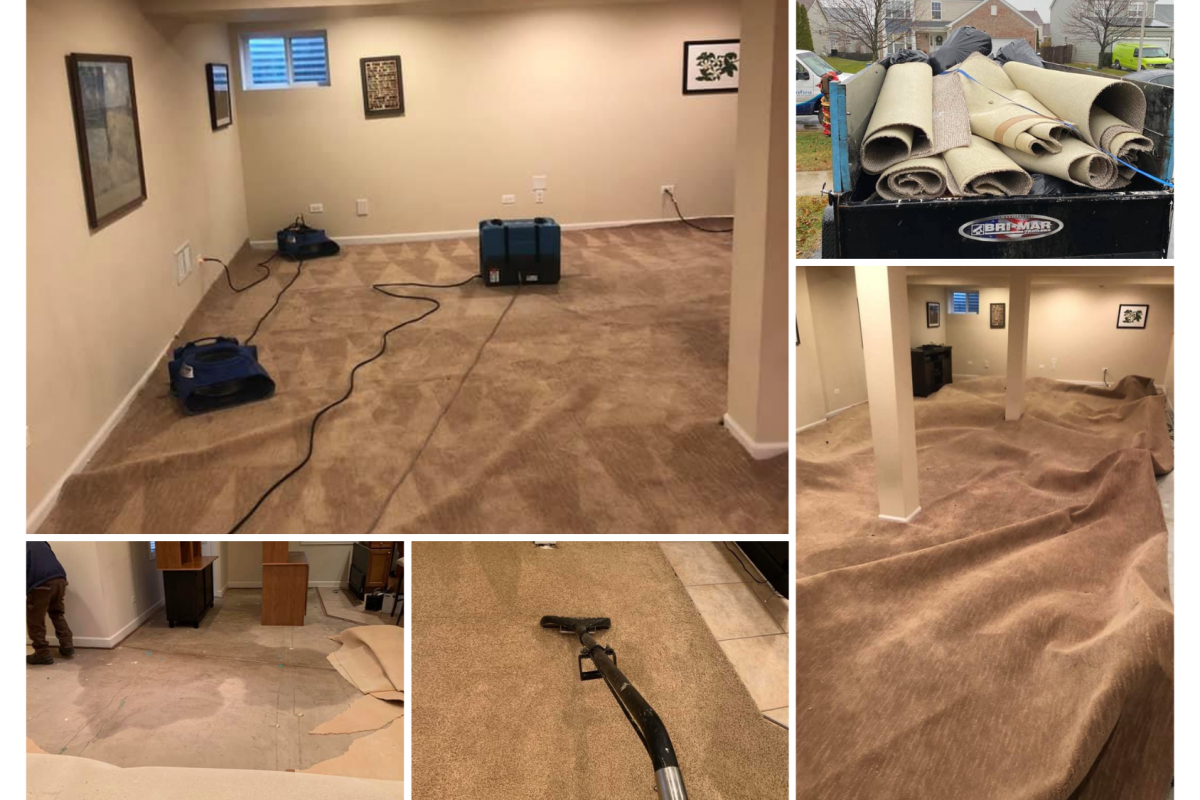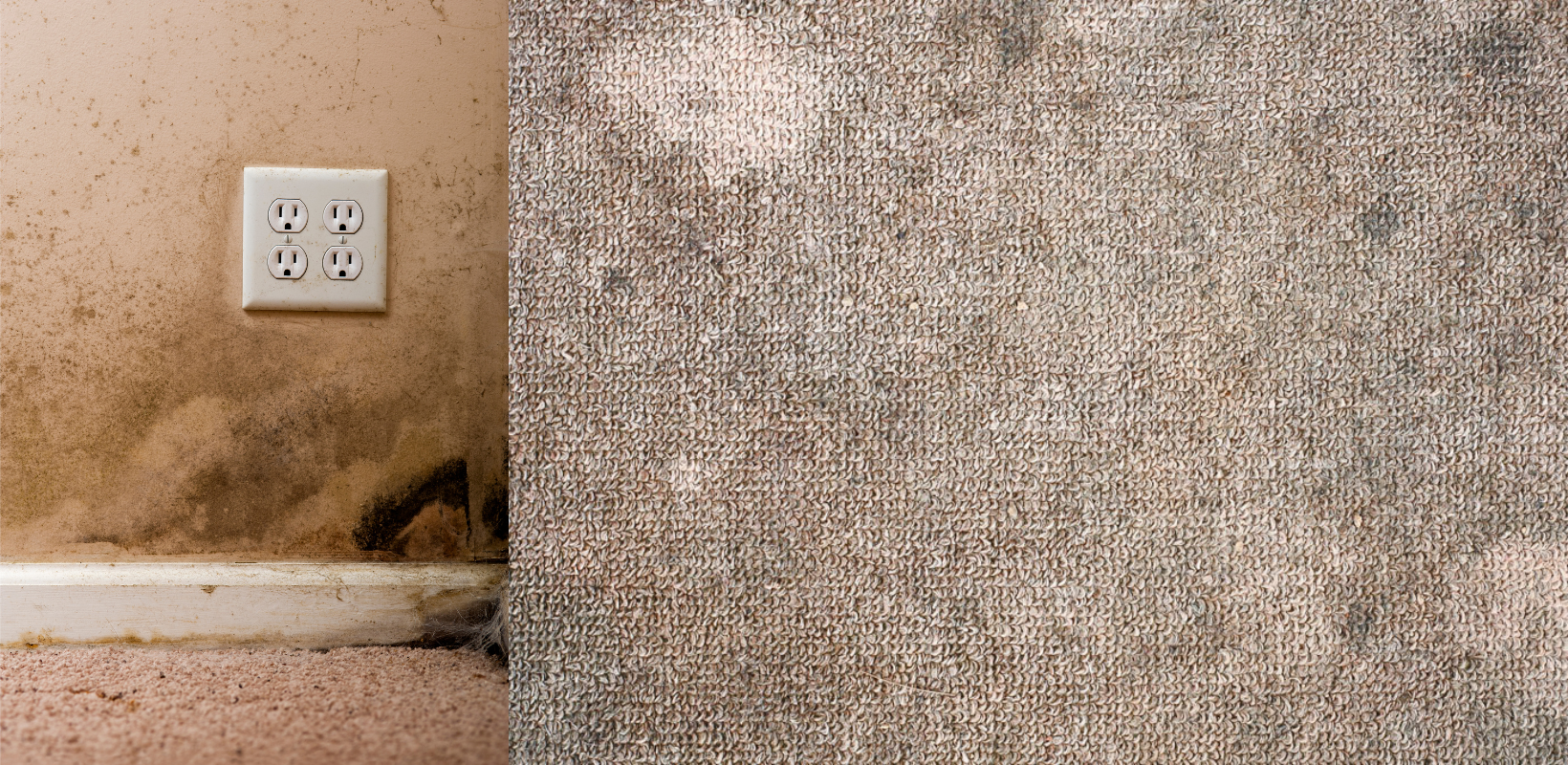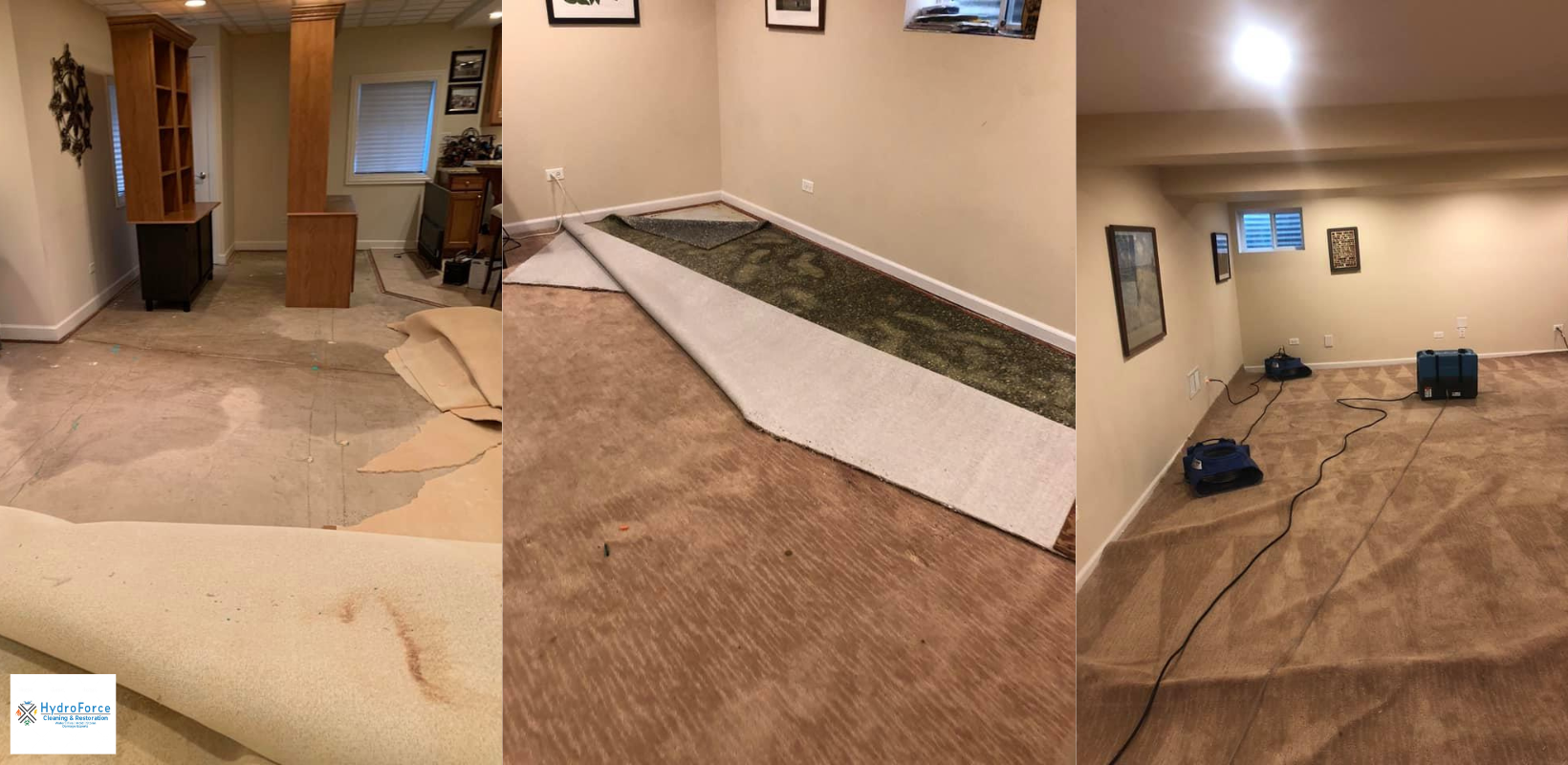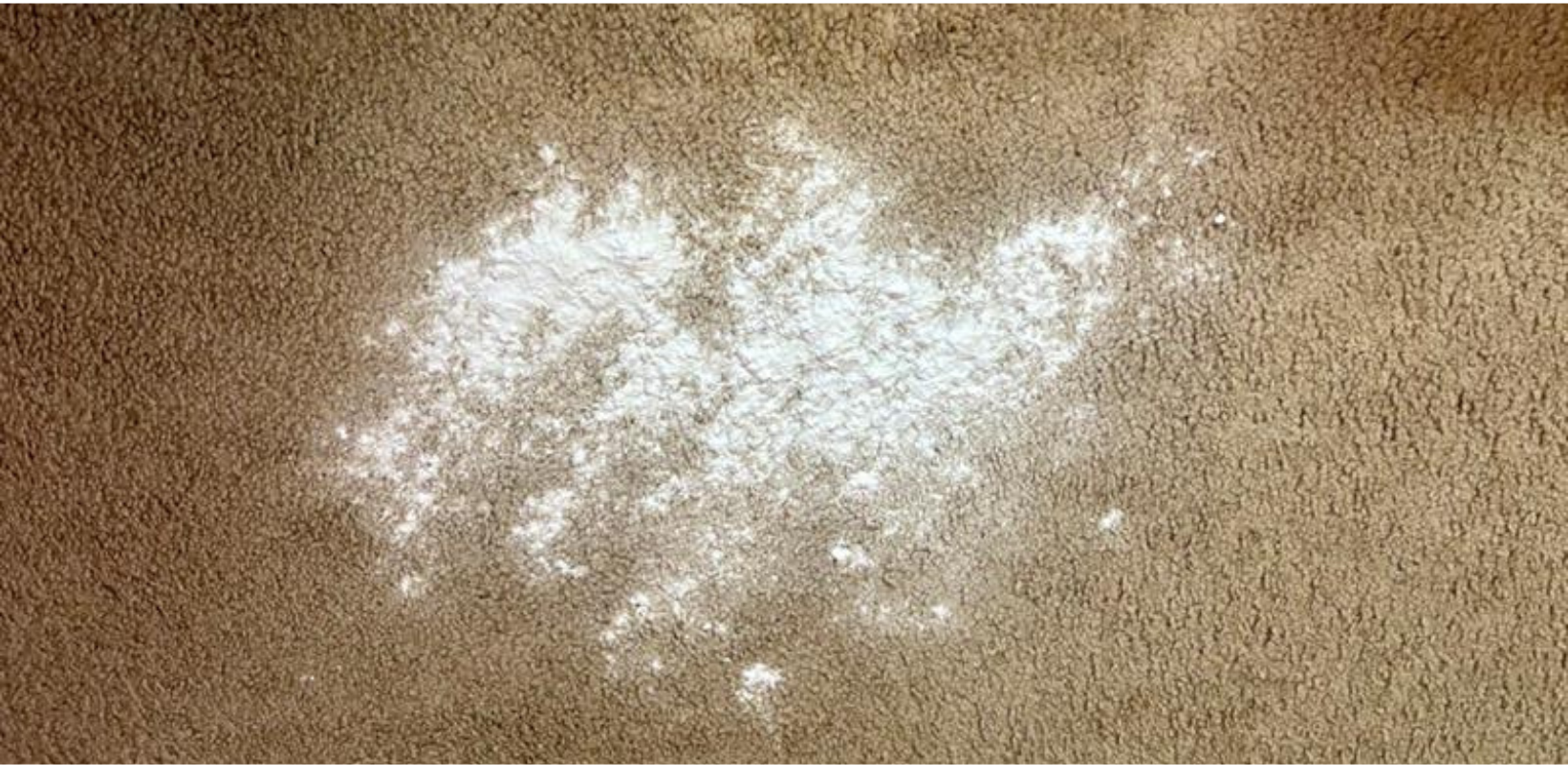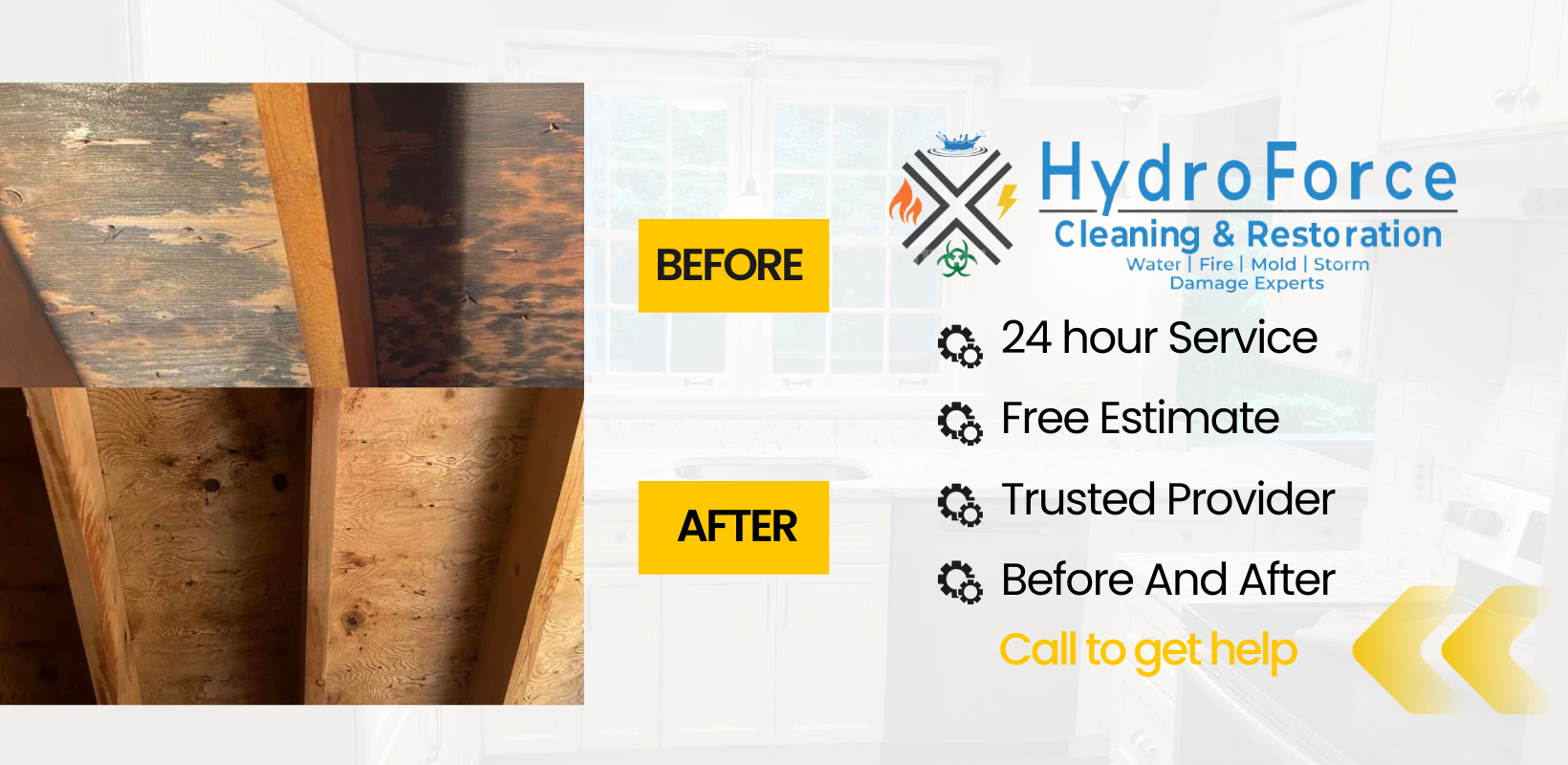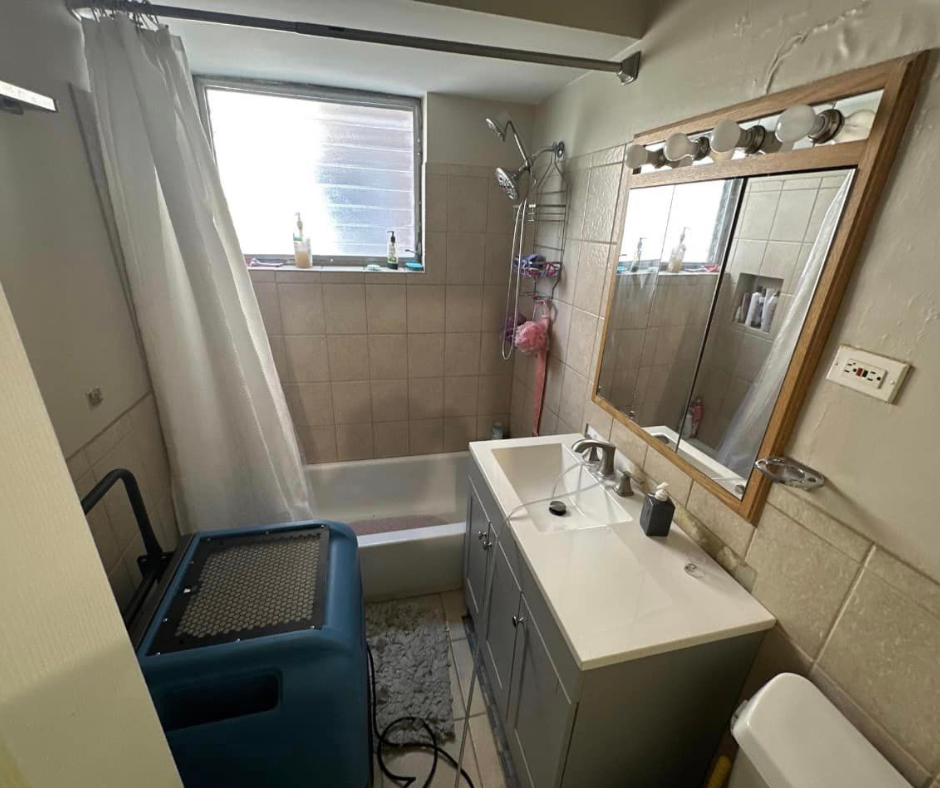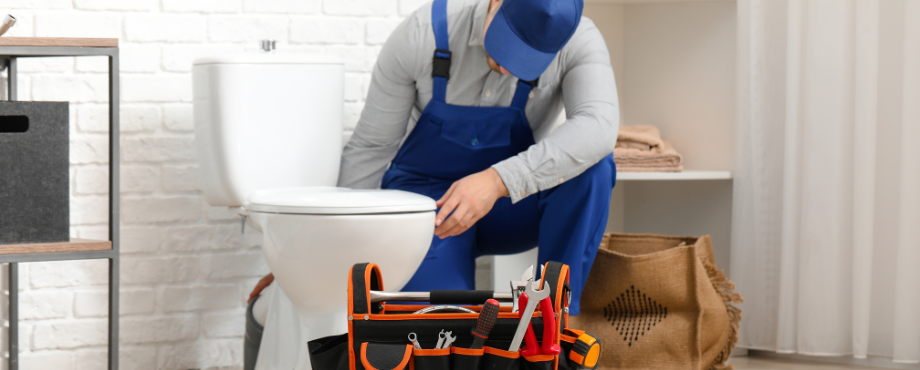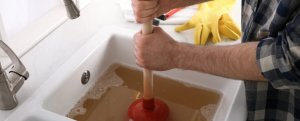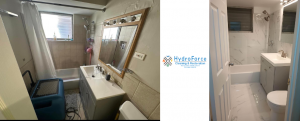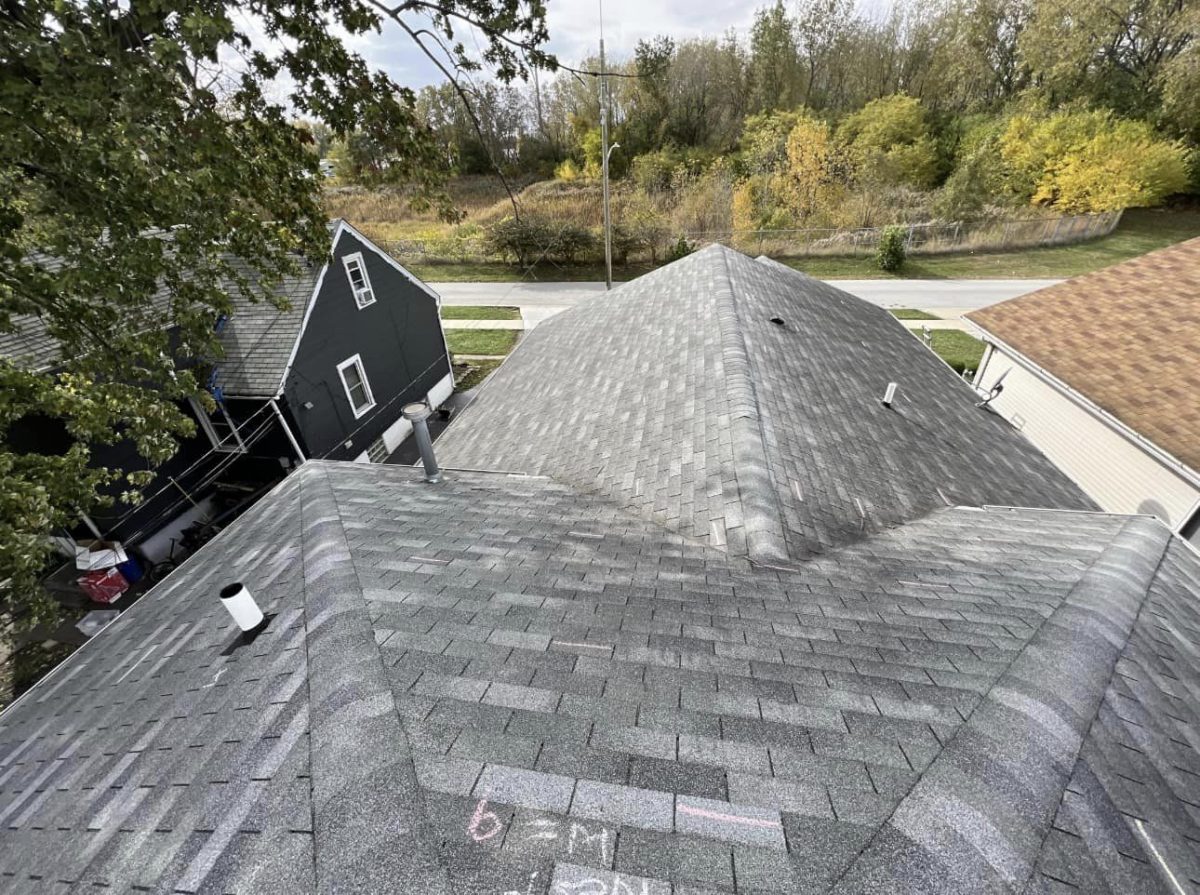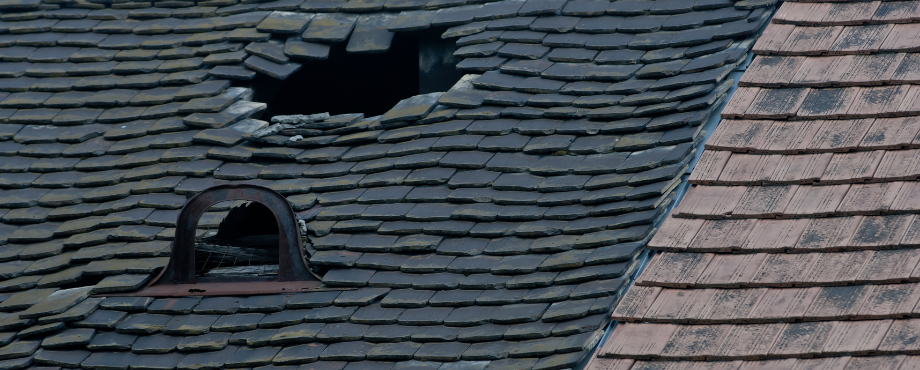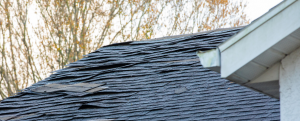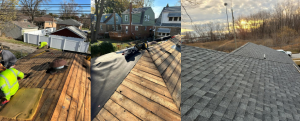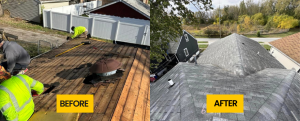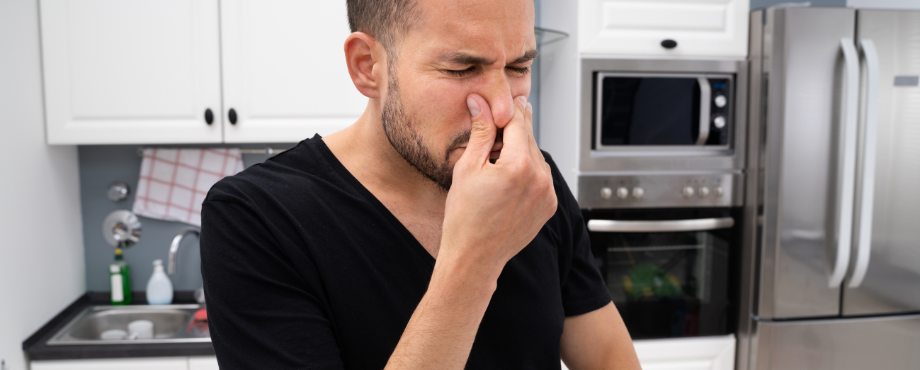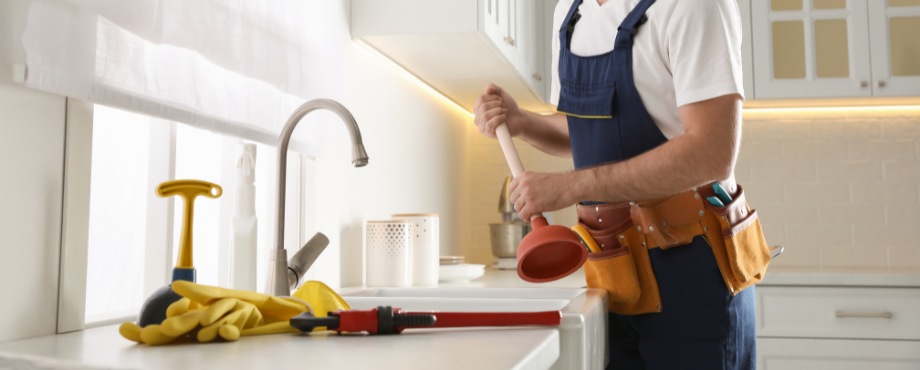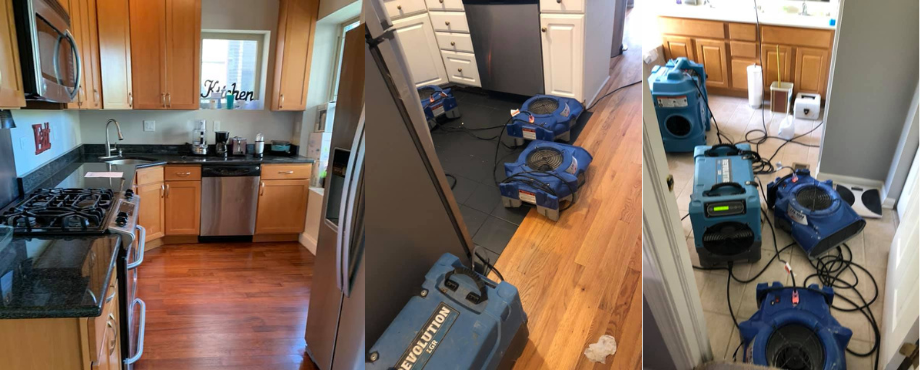Tips to Remove Smoke Odors After a House Fire
Home » Archives for Hydroforce Cleaning Systems
Fires can strike at any moment, causing significant damage to homes and businesses. The top priority is always ensuring the safety of all occupants. Once their safety is secured, the next crucial step is addressing smoke and soot removal. Removing smoke odor, however, poses a challenge, as it often clings stubbornly to walls, furniture, and other surviving items. Although difficult, eliminating smoke odors from a property is achievable. This guide will explore post-fire actions, crucial factors in smoke odor removal, and detailed steps to eradicate smoke damage from your home.
Review the Damage
Smoke residue, soot, and odors can cause significant property damage. The ease of restoring a space depends on the materials burned during the fire. Generally, soot from wood and paper is less oily than that from plastic furniture, carpet, or insulation. Burning plastic releases hydrochloric, hydrofluoric, and hydrobromic acids, among other reactive agents, in varying amounts. Furthermore, acid exposure leads to corrosion, and high humidity levels can exacerbate the activation of these corrosive elements.
Factors Affecting Smoke Removal
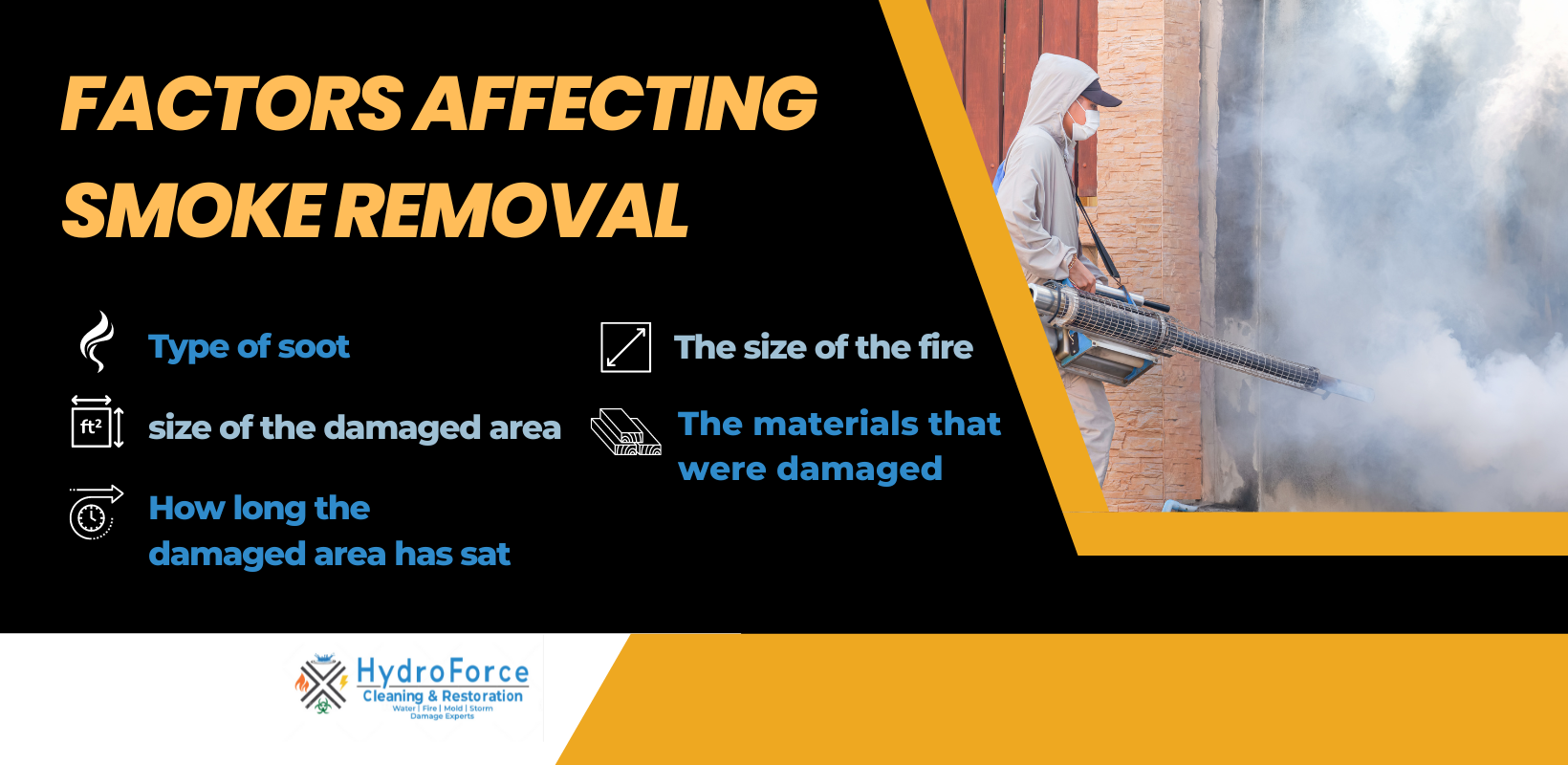
Restoring a fire-damaged home or business is possible. The process typically involves removing charred materials and using dehumidification and decontamination to lower humidity levels. This allows the space to be restored to normal use. Smoke odors usually cannot be eliminated by simply airing out the area due to the presence of soot, which must be addressed. Generally, vapor barriers made from heavy plastic sheeting are used to seal off the burned section or to protect untouched areas.
Professional fire damage restoration companies will remove smoke odors in various ways, depending on several factors. Here are some factors they will consider:
- Type of soot.
- The actual size of the damaged area.
- How long the damaged area has sat after a fire. Smoke and soot continue to spread after a fire which means the damage will worsen as more time passes before the restoration.
- The size of the fire. The bigger the fire, the more smoke it will produce.
- The materials that were damaged. If you’ve had odorous materials burned in the fire, which include plastics, it can make it more difficult to remove the smell. Smoke will get absorbed by fabric including curtains, furniture, and even carpeting, therefore, those items will need to be cleaned if they were exposed to it.
Often, if the contents have been damaged by fire, replacement may be necessary. Fire restoration companies typically conduct a test cleaning to determine if items can be restored, ensuring cost-effectiveness in the process. Such restoration can be carried out either on-site or off-site.
What steps should you take to remove smoke odors?
Smoke odors can quickly cling to porous items and materials, so it’s crucial to remove them from your property promptly after a fire. The presence of smoke can also affect the air quality in your home, posing health risks. After the fire in your home has been put out and it is safe to return, follow these steps to reduce the smoke odor in your home:
Air Out Your Home
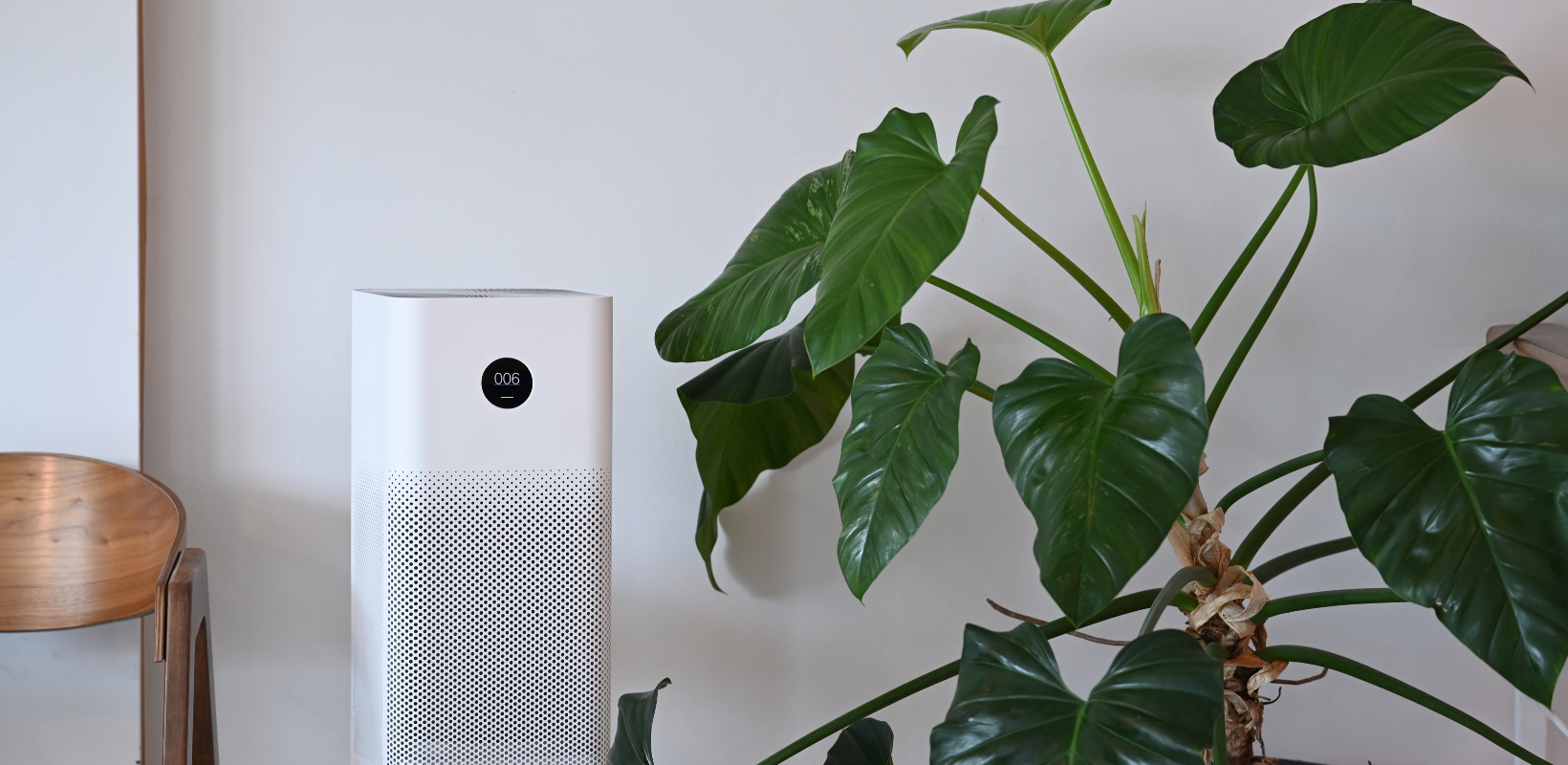
After a fire, smoke can persist in your home, leaving behind an unmistakable odor. Tiny smoke particles cling to surfaces such as furniture, clothing, carpets, and paint. Surface cleaning alone cannot eradicate these particles entirely, making it important to take swift action to eliminate the smoke smell and prevent inhaling these harmful smoke particles.
Airing out your home is essential. Open all windows and doors to ventilate the area and consider removing screens for optimal airflow. Strategically place fans in the corners, directing them towards the windows. Once activated, these fans will help expel the lingering fire smell more effectively.
Create Positive Pressure
Set a fan outside your front door and face it inward. Then close all the doors and windows while keeping the front door and window open and let the fan run for at least 15 minutes. This will allow fresh air into the room. Then, close the window and the door in that room. Move to another room with smoke odor and repeat the process.
Wash All Impacted Surfaces
Smoke and soot can spread anywhere in your home after a fire, including areas that the fire did not reach. The soot will settle on surfaces and objects throughout the affected area, and it must be cleaned to prevent further damage. These tips will help you clean some of the impacted surfaces and materials:
- Remove all the fabrics and clean them:
Make sure to remove all duvets, blankets, area rugs, and even curtains and wash them. Also, wash any clothes, towels, and linens if they were exposed to smoke. If you have any clean fabric items, make sure to keep them out of the home until the smoke smell is fully gone as they will not absorb the smell.
- Clean your windows:
Use a solution of hot water and white vinegar to clean your windows. Make sure to clean all areas of the window such as windowpanes, frames, sills, blinds, and screens. The windowpanes should be shiny and transparent. If they are not, that means that smoke may still be lingering. Window screens should be put in a tub or basin and cleaned with dish soap, then rinsed with cool water and dried in the fresh air.
- Clean all solid surfaces:
Use a mixture of warm water, white vinegar, and dish soap to wipe down all walls and ceilings, doors and doorframes, baseboards, cabinets, shelves, light fixtures and light switches. All uncarpeted floors should be mopped. The mop should also be rinsed regularly, so you do not end up spreading the smoke particles back on the floor.
- Clean the carpets:
Smoke particles can also linger in your carpets, so be sure to clean your carpets and upholstery. Sprinkle baking soda on them, let it sit for a few hours to absorb the odors, and then vacuum with a HEPA vacuum. For silk carpets or leather upholstery, hire a professional carpet cleaner to avoid potential damage.
Learn more about How to Remove Cigarette Smoke Odors from a Leather Couch.
Clean HVAC Systems and Air Ducts
After a fire, it’s important to clean and deodorize the HVAC system and air ducts as soot particles can become trapped in the filtration system. Ensure that registers and ductwork are inspected, and if found contaminated, they should be thoroughly cleaned. Additionally, introduce a neutralizing agent into your ductwork to eliminate odors, and apply a duct sealer to contain any residual smells.
Professional Smoke Removal
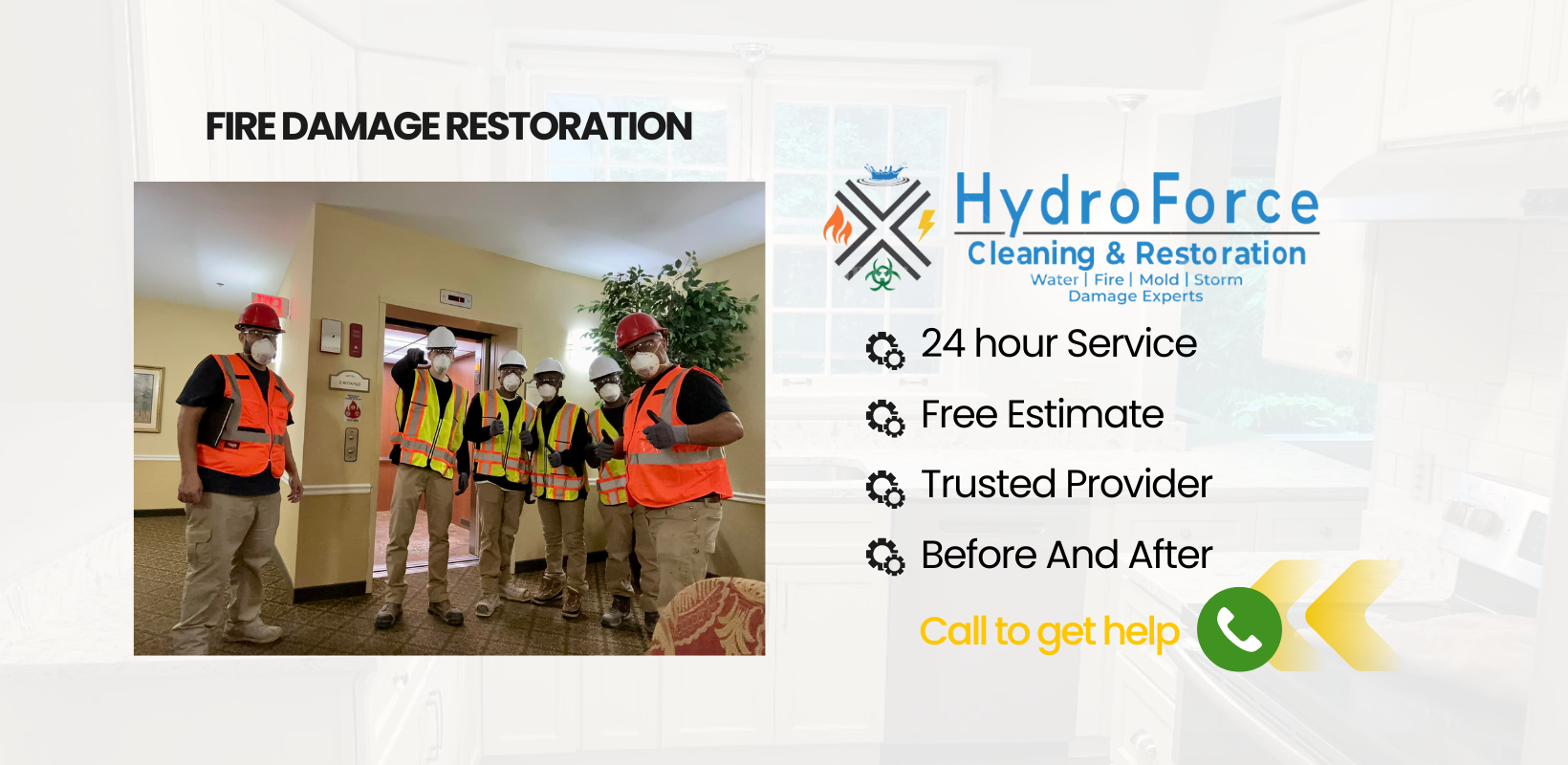
Have you faced a fire at your home or business? Our team at HydroForce Cleaning and Restoration is here to assist! Equipped with specialized tools and techniques, our professionals expertly clean and restore spaces affected by fire. With extensive experience in smoke remediation, we ensure your space is returned to its pre-fire condition, giving you peace of mind.
We will promptly arrive and start the restoration process to limit the damage. Regardless of the extent of the damage, we are committed to restoring your space swiftly and efficiently. For professional smoke damage and odor removal, contact HydroForce Cleaning and Restoration at (630) 835-0862.
Privacy Policy | Terms & Conditions | 630-835-0862
